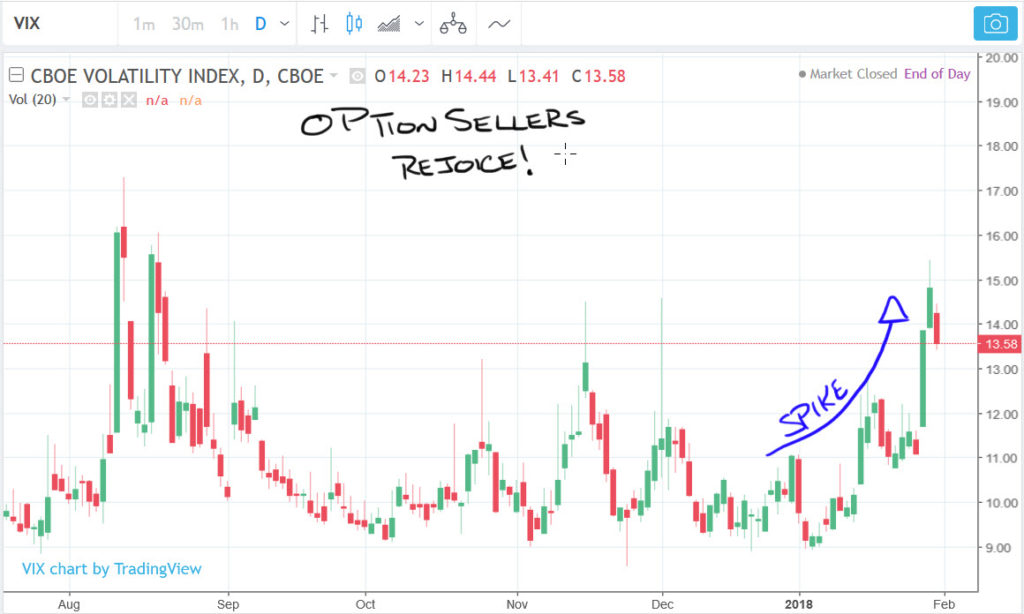
This may imply that the management have not identified a business opportunity that can lead to expansion of the business such as diversification opportunity. Hence the business may crush and close down after maturity as usual if we go by the business cycle model. Retention ratio indicates the percentage of a company’s earnings that are not paid out in dividends but credited to retained earnings. It is the opposite of the dividend payout ratio, so that also called the retention rate. As companies need to keep part or a full portion of their net profits to continue their operation and grow, investors take this ratio to help forecast where companies will be soon.
Furthermore, the payout ratio is calculated by dividing the dividends distributed by the net income. Also, a retention ratio doesn’t calculate how the funds are invested or if any investment back into the company was done effectively. It’s best to utilize the retention ratio along with other financial metrics to determine how well a company is deploying its retained earnings into investments. That said, the retention ratio formula for projecting future growth can be a great shortcut tool for making a reasonable estimate about the future—at least for setting a base rate on your growth estimate so you’re somewhere in the ballpark. We have prepared the retention ratio calculator to help you to calculate the retention ratio of a public company. The retention ratio calculation is important in analysing a company’s reinvestment policy.
The reason the retention ratio is so high is that the tech company has accumulated profit and didn’t pay dividends. As a result, the company had plenty of retained earnings to invest in the company’s future. The retention rate for technology companies in a relatively early stage of development is generally 100%, as they seldom pay dividends. But in mature sectors such as utilities and telecommunications, where investors expect a reasonable dividend, the retention ratio is typically quite low because of the high dividend payout ratio. The numerator of this equation calculates the earnings that were retained during the period since all the profits that are not distributed as dividends during the period are kept by the company. You could simplify the formula by rewriting it as earnings retained during the period divided by net income.
Disadvantages of Retention Ratio
They are a good example because although they pay out a lot in dividends, $2.8B in 2021, they payout even more through share repurchases ($8.8B in 2021). NOPAT, or Net Operating Profit After Taxes, is a great metric for a variety of reasons but especially because it tends to be a good starting point for calculating a company’s actual free cash flow. Especially when you come across matured companies with established market positions, growth rates will tend to be capped to the growth of a market. Going back to our Paychex example, we find these growth estimates to be conservative and rational for what we can expect for the future of the business. You can use a tool called quickfs.net to quickly look up the company’s historical average for ROE, and also pull up their historical dividend and EPS metrics.
In contrast, the dividend payout ratio shows the percentage of profits a company distributes to its shareholders. The dividend payout ratio decreases retained earnings, whereas the plow back or retention ratio increases retained earnings. Future growth potential and retention ratio are so directly linked that future growth rate can be calculated as a product of the company’s return on equity and retention ratio.
Dividends paid are not classified as an expense but rather a deduction of retained earnings. Dividends paid do not show up on an income statement but do appear on the balance sheet. In other words, ABC keeps 80 percent of its profits in the company, and only 20 % of its net profit profits are distributed to shareholders as dividends.
This makes it easier to compare one company to another in terms of their earnings retention. In the example above, we can see that the retention ratio for Alice’s business is going down each year. This is because net income is rising each year and dividends are rising by a proportionally larger amount, leading to a downward trend in the ratio. With that said, the numerator, in which dividends are deducted from net income, is simply the retained earnings account. For instance, a mature company might have a high retention ratio due to a business model oriented around acquiring competitors or adjacent companies in the market (i.e. growth through acquisitions/M&A).
Importance of Retention Ratio
A company might report this figure as Operating Income or as EBIT on their Income Statement, so it’s important you recognize both of them. I think that’s reasonable when you compare how efficient they’ve been with their capital historically. My Accounting Course is a world-class educational resource developed by experts to simplify accounting, finance, & investment analysis topics, so students and professionals can learn and propel their careers.

It also ignores the impact of debt on a company’s profitability and cash flows, which has its drawbacks but is very useful in comparing the operating businesses of companies on an apples-to-apples basis. The definitions of profitability and capital retained can differ depending on if you’re focusing on Profits and Losses or cash flows; these are the two primary differences of the two types of retention ratios. The payout ratio is the amount of dividends the company pays out divided by the net income.
Problems with the Retention Ratio
Dividends are the money that public listed companies distribute to their investors. This is a way of distributing the value generated by the business back to its investors. Hence, before you come to a conclusion, make sure you understand the company and the industry you are analyzing. Now that we have understood the retention ratio definition, let’s dive into analyzing the retention ratio formula. ABC Company earned $200,000 in net profit during the financial year and decided to give dividends of $40,000 to its shareholders. To better understand the retention ratio, we must first understand the company that we are calculating the ratio for.
This is a common scenario in an industry such as technology, where new companies rarely distribute dividends and retention rates are generally 100%. A lot of blue-chip companies pay periodically rising – or at least stable – dividends, while payout and retention ratios in defensive industries tend to be more stable. Investors can refer to the retention ratio when deciding how much money must be reinvested in their operations.
The NOPAT Retention Ratio Formula
Even though the retention ratio can tell you how much earnings are being reinvested into the business, it does not tell you how the money is being used. However, this will mean that the company is lending money to distribute its dividends. Hence, it is reasonable to believe that the dividend might be canceled in the future. We have written this article to help you understand what a retention ratio is and how to calculate it using the retention ratio formula.
Often, such companies are referred to as “cash cows”, as they are characterized by large market share in a mature, single-digit growth industry. However, this interpretation is based on the assumption that management is rational and makes corporate decisions with the “best interests” of its shareholders in mind. Investors may be willing to forego dividends if a company has high growth prospects, which is typically the case with companies in sectors such as technology and biotechnology.
Has Cincinnati Financial Corporation’s (NASDAQ:CINF) Impressive Stock Performance Got Anything to Do With Its Fundamentals? – Simply Wall St
Has Cincinnati Financial Corporation’s (NASDAQ:CINF) Impressive Stock Performance Got Anything to Do With Its Fundamentals?.
Posted: Tue, 08 Aug 2023 19:34:28 GMT [source]
In the next section, we’ll practice forecasting retained earnings using the payout ratio, which is directly linked to the retention ratio. Once dividends for the period have been paid out, the remaining profits are considered retained earnings. When the earnings of companies are credited to retained earnings instead of being issued out as dividends, the preserved amount flows into the “Retained Earnings” line item on the balance sheet. A limitation of the retention ratio is that companies that have a significant amount of retained earnings will likely have a high retention ratio, but that doesn’t necessarily mean the company is investing those funds back into the company. Now that we have the two inputs we can easily calculate the retention ratio formula for EPS.
This is because different companies have different optimal ranges for their retention ratios. Ted’s TV Company earned $100,000 of net income during the year and decided to distribute $20,000 of dividends earning retention ratio formula to its shareholders. You can use the retention ratio calculator below to quickly calculate how much of your company’s earnings have been or should be retained, by entering the required numbers.
There are potential difficulties with using this simple EPS retention ratio on companies however, especially ones who don’t pay a dividend. In the case of payroll providers, this ceiling is ultimately capped by corporate profitability. Like I showed in one my older posts on common macroeconomic data, corporate profits in the U.S. have grown at a median of 5.8% over the last 25 years. Both formulas have similarities in that they compare an efficiency, or return on capital formula, with how much capital a company retains in the business. It is the accounting money that the company earns after deducting all the necessary operational, financing, and tax expenses.
- The retention ratio also shows management’s attitude toward giving investors back.
- Given the increasing payout of dividends, we’d expect retained earnings to decline even with the $10m year-over-year (YoY) increase in net income.
- They rarely give dividends because they want to reinvest and continue to grow at a steady rate.
This is one of the important financial metrics because it shows how much a company is re-investing into its operations. Without a consistent reinvestment rate, the company’s growth would be completely dependent on financing from creditors and investors. The company’s on-growing track keeps maximum retained earnings to fuel future growth.
This makes sense because they are a payroll company, who simply needs to find clients and maintain a small staff to manage the payroll paperwork of their clients. The following calculations show how to calculate the retention or plow back ratios. Advisory services provided by Carbon Collective Investment LLC (“Carbon Collective”), an SEC-registered investment adviser. A copy of Carbon Collective’s current written disclosure statement discussing Carbon Collective’s business operations, services, and fees is available at the SEC’s investment adviser public information website – or our legal documents here. Therefore, the retention ratio should be used in conjunction with other metrics to assess the actual financial health of a company. Consequently, these types of companies have minimal reinvestment needs and essentially have developed into steady, turnkey businesses following years of strong growth to become market leaders.

Thus, such companies may opt to pay investors consistent dividends in preference to retaining more earnings. Net income can be found at the bottom of a business’ income statement, and the dividend figure can either be found in the shareholder’s equity section of the balance sheet or in the financing section of the cash flow statement. Once you have the NOPAT, you can calculate the Retention Rate by identifying the company’s capital reinvestments for growth. Those are called “Changes in Working Capital” (ΔWC) in the financial statements and “Capital Expenditures” (or capex).
